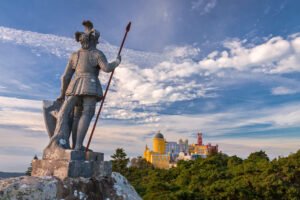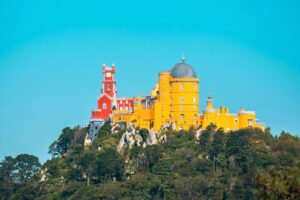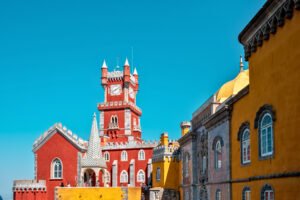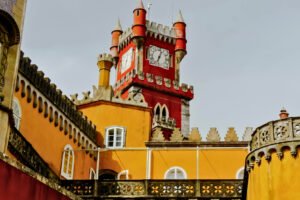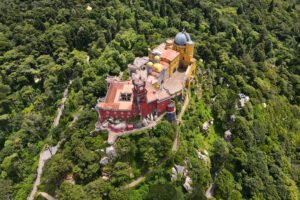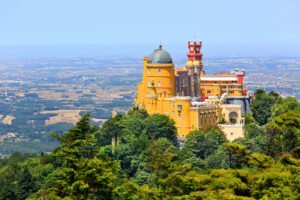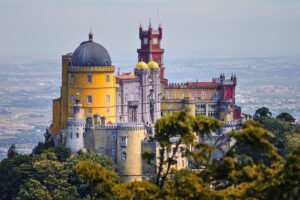Spotting Pena Palace for the first time almost feels like seeing a real-life fairytale pop out of the misty hills of Sintra. The bright colors, wild mix of turrets, and sweeping views make every step up the winding path worth it. With every corner you turn, the palace surprises you—sometimes playful, sometimes mysterious, always unforgettable.
Quick Facts
📍 Location: Sintra, Portugal
🏗️ Construction Period: 1839 – 1854
🏰 Architectural Style: Romanticism with Neo-Gothic, Neo-Renaissance, and Moorish elements
🎭 Famous For: Bright colors, fantastical architecture, Romanticist influence, stunning views
👑 Notable Residents: King Ferdinand II and Queen Maria II (by marriage)
🏆 UNESCO Status: Yes (part of Sintra Cultural Landscape)
Gallery Photos
Visiting Information
🗓️ Best Time to Visit: April, May, late September, and October.
🗺️ Location Perks: Set in a UNESCO-protected landscape, just a short hop from Sintra’s old town, cafés, and other historic sites.
⏳ Estimated Visit Duration: Plan to spend 2–3 hours exploring Pena Palace’s vibrant rooms, terraces, and lush surrounding parklands.
💡 Visiting tips: Wear comfortable shoes—the grounds and park are hilly and involve plenty of walking.
Map
Related Articles
Historical Context
Pena Palace may look centuries old, but its story is surprisingly modern. In the mid-1800s, King Ferdinand II dreamed up a summer retreat atop Sintra’s highest peak, blending Romantic, Gothic, Moorish, and Renaissance styles into something entirely original. The result was part castle, part theater set, bursting with bright colors and dramatic details. Over time, Pena Palace became a symbol of Portugal’s Romantic movement and royal imagination—a place for art, music, and reflection. After the fall of the monarchy, the palace opened to visitors and quickly became a must-see for travelers from around the world. Today, its walls echo with stories of royal banquets, stormy weather, and long walks through misty forests. More than just a monument, Pena Palace is a testament to creative ambition and the enduring magic of Sintra.

